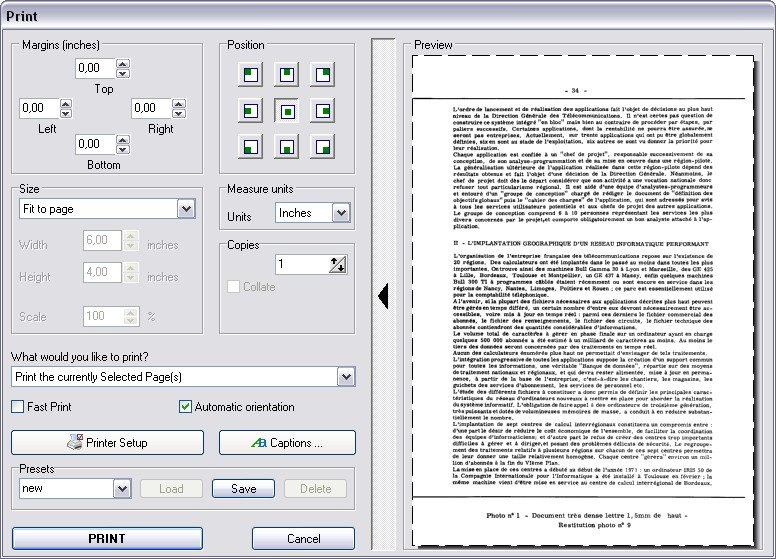File Extension .tiff


A file with the TIF or TIFF file extension is a Tagged Image file, used for storing high quality raster type graphics. The format supports lossless compression so that graphic artists and photographers can archive their photos to save on disk space without compromising quality. I have seen TIFF files having various extensions - TIFF,TIF,tiff,tif. Are they same? Can I safely rename a file with TIFF extension to tif or will it cause loss of.
What is a TIF file? TIF stands for Tagged Image File.
These files are also known as TIFF files, or 'Tagged Image File Format' files. The files that contain the.tif file extension contain high-quality graphic images. These files are commonly used to store color images, such as digital photographs, but the TIF file format is also used to store digital faxes and other scanned documents. TIF files can be saved in their original, uncompressed lossless TIF format or they can be saved in the LZW file format. This format does reduce the size of the TIF file, but also results in a loss of image quality.
TIF files can also be converted to the JPEG file format, which also compresses the size of the TIF file, but also has an affect to the quality of the image that the file contains. • What is a file extension? A file extension is the characters after the last dot in a file name. For example, in the file name 'winmail.dat', the file extension is 'dat'. It helps Windows select the right program to open the file. • We help you open your file We have a huge database of file extensions (file types) with detailed descriptions.
We hand pick programs that we know can open or otherwise handle each specific type of file. Borland C Compiler For Windows 7 32 Bit. • Original downloads only All software listed on file.org is hosted and delivered directly by the manufacturers. We do not host downloads on our own, but point you to the newest, original downloads.
TIFF 6.0 (3 June 1992; 25 years ago ( 1992-06-03) TIFF Supplement 2 / 22 March 2002; 15 years ago ( 2002-03-22)) Type of format Extended from tiff Extended to,,, TIFF/IT, TIFF-FX, Website Tagged Image File Format, abbreviated TIFF or TIF, is a for storing images, popular among graphic artists, the publishing industry, and photographers. TIFF is widely supported by,,,, image manipulation,, and page-layout applications. The format was created by for use in desktop publishing. It published the latest version 6.0 in 1992, subsequently updated with an copyright after the latter acquired Aldus in 1994.
Several Aldus or Adobe technical notes have been published with minor extensions to the format, and several specifications have been based on TIFF 6.0, including (ISO 12234-2), TIFF/IT (ISO 12639), TIFF-F () and TIFF-FX (). Contents • • • • • • • • • • • • • • • • • • • • • • • • • • • • • • History [ ] TIFF was created as an attempt to get desktop vendors of the mid-1980s to agree on a common scanned image file format, in place of a multitude of.
In the beginning, TIFF was only a format (only two possible values for each pixel), because that was all that desktop scanners could handle. As scanners became more powerful, and as desktop computer disk space became more plentiful, TIFF grew to accommodate images, then color images. Today, TIFF, along with and, is a popular format for images. The first version of the TIFF specification was published by Aldus Corporation in the autumn of 1986 after two major earlier draft releases. It can be labeled as Revision 3.0. It was published after a series of meetings with various scanner manufacturers and software developers. In April 1987 Revision 4.0 was released and it contained mostly minor enhancements.
In October 1988 Revision 5.0 was released and it added support for palette color images and. Features and options [ ] TIFF is a flexible, adaptable file format for handling images and data within a single file, by including the header tags (size, definition, image-data arrangement, applied ) defining the image's geometry. A TIFF file, for example, can be a container holding (lossy) and (lossless) compressed images. A TIFF file also can include a -based (outlines, croppings, image frames). The ability to store image data in a format makes a TIFF file a useful image archive, because, unlike standard JPEG files, a TIFF file using lossless compression (or none) may be edited and re-saved without losing image quality. This is not the case when using the TIFF as a container holding compressed JPEG. Other TIFF options are and pages.